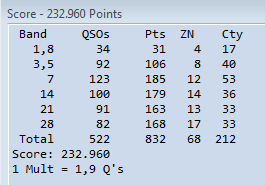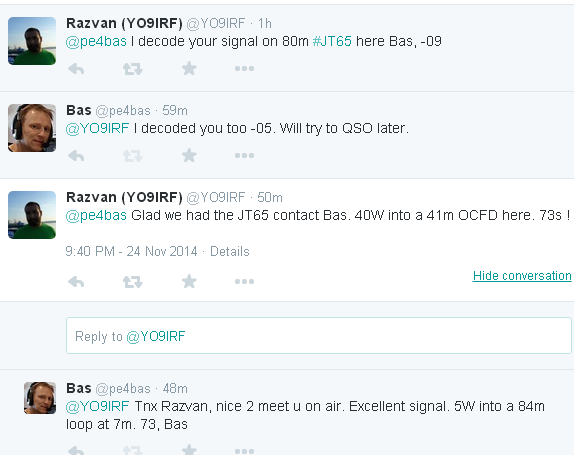Since I got very good results with the PE1BVQ 3 band endfed on my 12m glasfiber mast and using the Yaesu FT-817 I was curious which antenna would perform better. I would like to know how my homemade aluminium tape vertical would perform in comparisation with the simple 3 band endfed.
This experiment takes only half a hour so I made a quick setup just before sunset. I setup the endfed on the 12m glasfiber mast with the matching box on 2 mtr above the ground, the antenna was connected to the radio with 20m aircell7. The alu tape vertical is mounted with the autotuner on 9 Mtr above the ground and has 3 radials. The results are shown in the video. Almost no difference except on 40m were my alu tape vertical seemed to be better. I spoke about it with PE1BVQ Hans, he thought it could be the coil that is placed for the 40m band extension wire. But I think, since the signal came from Europe, that the endfed has a lower radiation angle. Over all I had the idea my alu tape vertical was slightly better and certainly has less noise. Although on 20m it picked up some rattling noise that could not be heard with the endfed. If the endfed was mounted at a 9 Mtr mast I guess it would perform equally or better as my Alu tape vertical. I was not the only one making a test, someone else did post a video comparing a vertical and a endfed here. Although it is not clear what the setup was of the vertical.
Speaking about my alu tape vertical, just searching on google revealed something interesting. There seems to be more then 2 (Alu tape/Copper tape) conducting adhesives. Most interesting is the 3M Z Axis Tape. The adhesive is filled with silver coated nickel particles and is extremely conductive. It is double sided but that doesn't matter for a antenna as you always cover it with other tape as well. The interesting thing is that the adhesive is conducting and not the tape itself, so wrapping around is no problem. With aluminium tape you have to use long strokes as the adhesive as not conducting. I think it would perform extremely well on a antenna, there is only one big disadvantage and that is the price. You can buy 33 Mtr 25mm tape at Farnell for €181,45. That's a lot of money for a experiment!
![]()
This experiment takes only half a hour so I made a quick setup just before sunset. I setup the endfed on the 12m glasfiber mast with the matching box on 2 mtr above the ground, the antenna was connected to the radio with 20m aircell7. The alu tape vertical is mounted with the autotuner on 9 Mtr above the ground and has 3 radials. The results are shown in the video. Almost no difference except on 40m were my alu tape vertical seemed to be better. I spoke about it with PE1BVQ Hans, he thought it could be the coil that is placed for the 40m band extension wire. But I think, since the signal came from Europe, that the endfed has a lower radiation angle. Over all I had the idea my alu tape vertical was slightly better and certainly has less noise. Although on 20m it picked up some rattling noise that could not be heard with the endfed. If the endfed was mounted at a 9 Mtr mast I guess it would perform equally or better as my Alu tape vertical. I was not the only one making a test, someone else did post a video comparing a vertical and a endfed here. Although it is not clear what the setup was of the vertical.
Speaking about my alu tape vertical, just searching on google revealed something interesting. There seems to be more then 2 (Alu tape/Copper tape) conducting adhesives. Most interesting is the 3M Z Axis Tape. The adhesive is filled with silver coated nickel particles and is extremely conductive. It is double sided but that doesn't matter for a antenna as you always cover it with other tape as well. The interesting thing is that the adhesive is conducting and not the tape itself, so wrapping around is no problem. With aluminium tape you have to use long strokes as the adhesive as not conducting. I think it would perform extremely well on a antenna, there is only one big disadvantage and that is the price. You can buy 33 Mtr 25mm tape at Farnell for €181,45. That's a lot of money for a experiment!




































